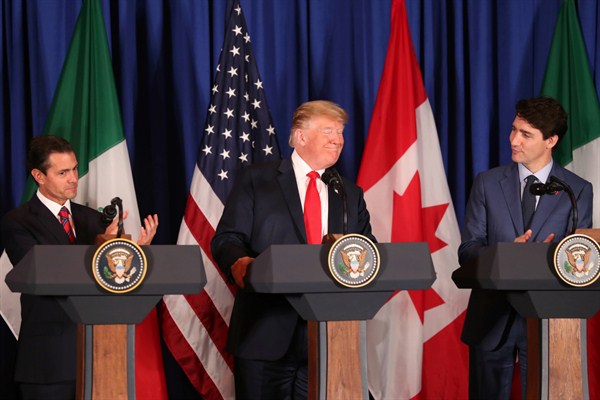President Donald Trump has announced a number of trade deals this year, touting each one as the best, greatest, most wonderful agreement ever. Time after time, however, the reality fell far short of Trump’s hype, including the most recent announcement of an agreement with China. Indeed, the announced “agreements” with Europe, Japan and China merely began the process of negotiating. And far from replacing the “worst trade deal ever,” the U.S.-Mexico-Canada Trade Agreement mainly updates and tweaks the North American Free Trade Agreement, or NAFTA.
One thing none of these agreements accomplished was to get rid of the tit-for-tat tariffs with these trading partners, including the only substantive deal of the lot with Canada and Mexico. Trump’s trade truces are better than the alternative of further escalation, of course. But despite what Trump keeps asserting about tariffs making America rich, it is Americans who are paying billions of dollars in higher tariffs and losing sales on exports. Perhaps Trump, a self-described “Tariff Man,” just likes tariffs more than he likes negotiating real solutions.
To review briefly, after a great deal of back and forth about which countries would receive exemptions, the Trump administration imposed tariffs last spring on steel and aluminum imports from all U.S. trade partners, with the exception of Argentina, Brazil and South Korea, which agreed to cap their exports, and Australia for reasons that are not entirely clear. The administration claimed that the tariffs were necessary for national security reasons. But the fact that the tariffs hit nearby neighbors and America’s closest allies undermined the administration’s case.

